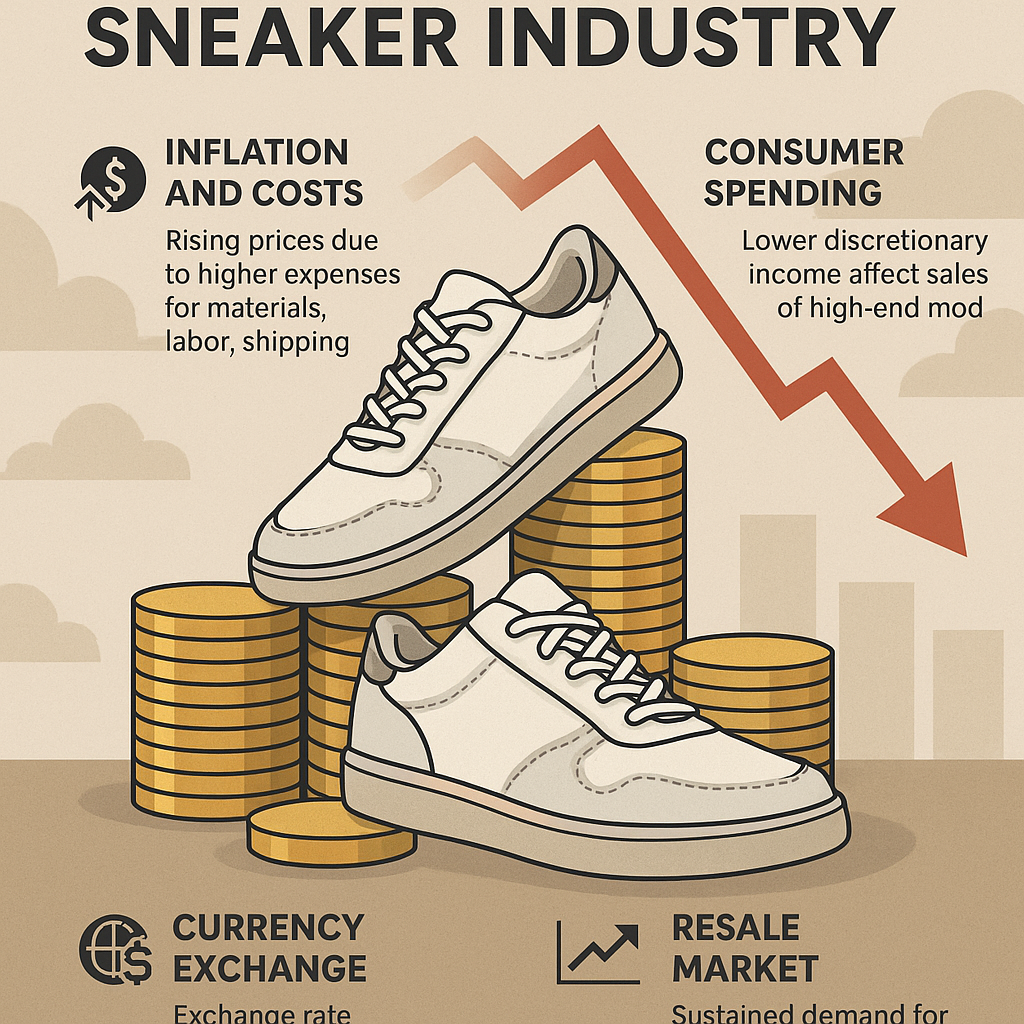
Sneakky Klean Black Friday 2025: Every Pair Cleaned for $24.99
Sneakky Klean’s 2025 Black Friday sale gives customers $24.99 cleanings on every pair. Available in-store and via pickup. Fresh sneakers, no excuses. Read more

The global sneaker market, a multibillion-dollar industry, is being reshaped by shifting macroeconomic dynamics like inflation, consumer confidence, and global economic trends. According to IMARC Group, the sneaker market was valued at USD 94.1 billion in 2024 and is projected to hit USD 157.9 billion by 2033, at a compound annual growth rate (CAGR) of 5.32% . These figures highlight how economic forces are influencing both demand and production.
Inflation is pushing up costs across the supply chain, from raw materials to logistics. The economics of sneaker reselling, where limited editions fetch premiums, reflects how costs and demand interplay in this ecosystem.
Economic uncertainty is prompting consumers to prioritize value over hype. That trend is reflected in softer sales for premium sneaker lines. Yet, despite these challenges, strategic pricing and versatile product lines are helping brands stay competitive.
Exchange rate swings affect global pricing, making U.S. sneakers pricier abroad or more compelling, depending on currency strength. Regions like Southeast Asia are booming in resales, accounting for up to 40% of global sneaker resale growth
4. Brand Strategies in Economic Downturn
Brands are adapting through:
Diversified price tiers
Direct-to-consumer models
Emphasis on sustainability, aligning with rising consumer demand for eco-conscious products WikipediaIMARC Group.
Despite economic cycles, the sneaker resale market remains thriving. Forecasts suggest it could grow from USD 2 billion to USD 30 billion by 2030, showing how collectible footwear continues to perform as ‘alternative assets.’
Tariff uncertainty has led sneakerheads to stockpile favorite styles. As prices rise, “pull-forward” purchasing is becoming a defensive strategy for securing value. Americans were stockpiling sneakers pre Trump Administration in order to avoid upcoming tarriff increases accordingh to Market Watch
The sneaker industry is deeply interconnected with global economics. Inflation, tariffs, currency shifts, and consumer confidence all shape production costs, retail strategy, and resale dynamics. For sneaker brands and enthusiasts alike, navigating these macroeconomic variables is key to maintaining value, whether pursuing fresh drops or building a durable collection. By embracing adaptability and awareness, both sides of the sneaker game can stay agile in an ever-evolving market.
Dev from Sneakky Klean is a contributor to the Sneakky Klean blog, sharing insights and expertise about sneaker care, cleaning techniques, and footwear maintenance.

Sneakky Klean’s 2025 Black Friday sale gives customers $24.99 cleanings on every pair. Available in-store and via pickup. Fresh sneakers, no excuses. Read more

Fall 2025 sneakers mix suede, animal prints, and retro runners. Explore key trends — and how Sneakky Klean keeps them looking fresh. Read more

Celebrate Breast Cancer Awareness Month with our $19.99 pink sneaker cleaning and free charm for women. A fresh step for a meaningful cause. Read more